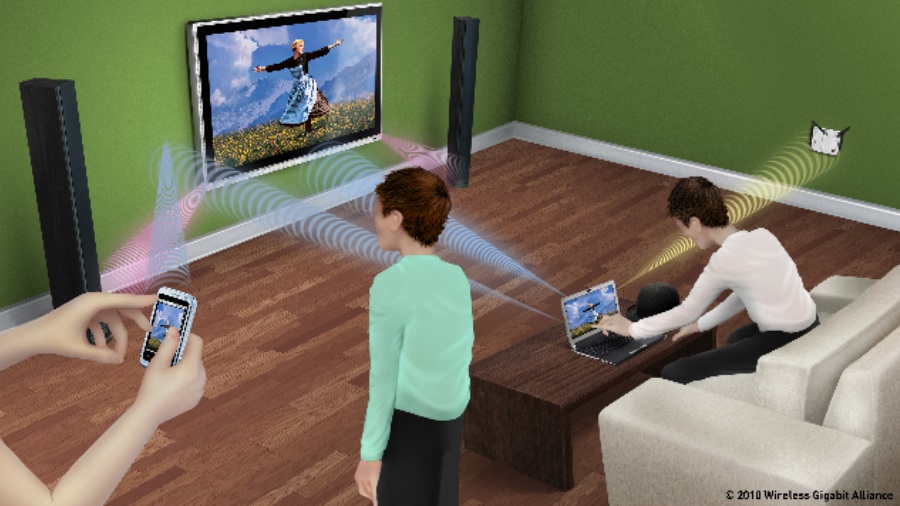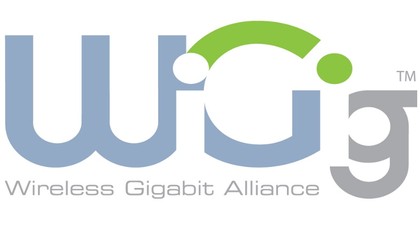WiGig: what it is and why you need to know
It's like Wi-Fi, but faster and shorter. But is it good?

Good news! ZTE has thrown its weight behind WiGig! If you recognise the name of the Chinese telecoms giant but haven't a clue what WiGig is, you're not alone.
It's one of several new and potentially confusing new wireless standards. So what is it, and what will it do for your gadgets?
WiGig is a kind of wireless HDMI
WiGig's range is much shorter than Wi-Fi's - it'll run out of puff at about ten metres and doesn't really do walls - and it's designed to work alongside, not instead of, existing wireless networks. The idea is to have Wi-Fi for your broadband connection and WiGig to wirelessly interconnect home entertainment devices, PCs, tablets and so on. You could also use WiGig to connect tablets and other devices to in-car entertainment systems and headrest-mounted video screens. If you're thinking wireless HDMI, you're on the right lines.
WiGig is fast
WiGig uses the relatively uncluttered 60GHz frequency band to deliver speeds of up to 7Gbps, although like Wi-Fi you'll need hardware with multiple aerials to get the maximum possible throughput. Connection speeds drop rapidly when you put any distance between your devices: so far peak speeds occur when they're within three metres of one another and tail off dramatically after that.
WiGig wants to work with everything
Sign up to the TechRadar Pro newsletter to get all the top news, opinion, features and guidance your business needs to succeed!
WiGig can act as a connection layer for devices that expect to connect via USB, DisplayPort, PCIe and HDMI. Provided devices have the correct radios installed, it can be backwards compatible with 802.11 Wi-Fi connections in the 2.4GHz and 5GHz frequency bands.
WiGig is efficient
WiGig has been designed as a low power technology, and claims to be five times more energy efficient than Wi-Fi. It uses a technology called "beamforming" to target its radio beams for best performance, reducing congestion and effectively pointing the radio signal where it needs to go. The WiGig Alliance says that beamforming will also enable robust connections beyond the ten-metre mark, but there's a big difference between "robust" and "speedy".
WiGig wants to connect everything
WiGig isn't just about connecting home entertainment kit to HDTVs: it wants to embrace tablets, mobile phones and PCs too. If implemented well, it could mean automatic, instant wireless docking - so for example when you flop onto the sofa with your smartphone, it could automatically connect to and stream its display to your telly.
WiGig isn't a proprietary standard
WiGig comes from the Wireless Gigabit Alliance. Alliance members include Broadcom, Cisco, Intel, Microsoft, Dell, Nokia, Toshiba, Qualcomm, NEC, Panasonic and several other big hitters. That means it should attract widespread support. Unfortunately some of those members also support other, competing standards such as Wireless HD. Speaking of standards...

WiGig is one of several competing standards
There are several standards hoping to become the wireless equivalent of HDMI: WiGig, WHDI, WiDi and Wireless HD.
WiGig is going to be the official 60GHz wireless standard
The official IEEE standard for 60GHz wireless communications is 802.11ad, and while it was originally separate from WiGig the WiGig Alliance has been working with the IEEE on standardisation. Ultimately we're likely to use WiGig to mean 802.11ad and vice-versa.
The WiGig release date is some way off
We're unlikely to see WiGig-compliant hardware in big numbers until late 2012 or early 2013, and as with any new technology it's probably a good idea to see if WiGig takes off before splashing any cash - not least because the cost of wireless hardware always plummets as it starts to become more popular.
Contributor
Writer, broadcaster, musician and kitchen gadget obsessive Carrie Marshall has been writing about tech since 1998, contributing sage advice and odd opinions to all kinds of magazines and websites as well as writing more than twenty books. Her latest, a love letter to music titled Small Town Joy, is on sale now. She is the singer in spectacularly obscure Glaswegian rock band Unquiet Mind.
